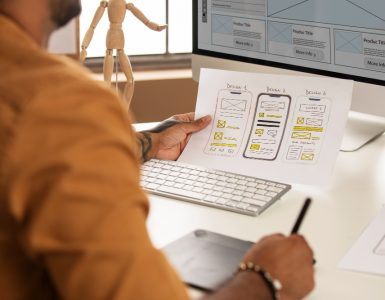The cars we drive today are much closer to the computer than the traditional car. The number of automated functions that used to be available only in premium cars is growing rapidly, and today features such as satellite navigation, onboard computer, or parking assistance can be found even in popular models. Advanced technologies sometimes come to you with people who can be called the “embodiment” of these technologies. Connected Car apps can solve both safety problems and inform drivers about the condition of the car and its systems, as well as inform them about what’s happening on the road. Of course, there are many applications for businesses, both logistics companies and those who sell cars. The fact that a lot of data can be gleaned from a car connected to the Internet is also important, giving manufacturers, for example, the ability to make changes to the engine design by having analytics on how it’s working. But if you want to know much more information about car improvements and other modifications, then go to the site https://truckcustomizers.com, where you can read about absolutely all-new ways to improve your car.

The most interesting thing is that you have the opportunity to use most of the features offered by car manufacturers, and there is no need to buy a new car at all, as long as you have a smartphone, Internet access, and a few useful applications. Today I’m going to talk more about how apps are shaping the future of cars and which are available for free and can increase the functionality of your car on the road in ways you never thought possible.
The Most Popular App – Car Recorder
This is a free app for Android devices that allows you to make video recordings from your car. The application works as a “black box” or DVR, recording everything, but saving only what the user is really interested in. The program will be useful for drivers, allowing them to quickly and safely save videos of important traffic events.
On a typical trip lasting a couple of hours, it may be necessary to save only a few short (5-10 minutes) videos. Nevertheless, the app records and saves everything in the camera lens, working as a background process and not filling the SD card. Old and invaluable videos are permanently deleted, while important events (recorded using the accelerometer or manually) are saved for later review. The app can also automatically take photos at preset intervals. Videos and photos are time and coordinate tagged, and can even be uploaded for remote storage according to user-defined settings. Speed, altitude, and GPS coordinates are stored every second and can be displayed in the video footage. You can also use automatic or manual reverse geocoding (coordinates decoding, i.e. translation to addresses, real geographic names) of photos and video recordings. After recording, the saved files can be grouped and viewed.
The Future of The Automobile Industry
As we can see, almost all the modern elements of the car were invented long before… And those created today were also conceptualized much earlier. It is from this point of view that we should consider the latest developments of the car industry, which to many people seem too futuristic.
The tectonic shift will happen at the moment of mass transition from the hydrocarbon era to hydrogen cars. This transition is imminent because of the high need of many countries to diversify energy sources for transport operations. Not to mention the environmental claims of developed countries. One of the main problems with hydrogen fuel is its high cost. However, there is not a single component of the automobile that has not faced the same issue. Over time, it has been successfully resolved.
Hydrogen fuel cells are more capacitive than, for example, batteries. The world’s largest companies are putting a lot of effort into the development of hydrogen transport, understanding that it is the future. Developers of unmanned cars are also bringing the automotive industry’s revolution closer. At the beginning of December 2020, China put the first 25 “robotaxis” with apps – autonomous unmanned cars completely unsupervised on public roads – on the roads for the first time. In Norway, unmanned snowplows and ferries have been put into operation, which performs functions according to simple scenarios. So, we cannot say that unmanned transportation technologies are the future, because they already exist, are being tested, and applied. The only question is the cost and the level of development of artificial intelligence, and the world is investing a lot of money in solving them.
The Future of Mobile Applications
Intelligent mobile solutions and smart cities, the full integration of electronic infrastructure, and Internet-connected vehicles are just a few examples of the ever-growing digital opportunities around which companies are already developing products and services. To bring these innovative technologies into our lives even faster, Interior is expanding its use of digital communications. Hybrid reality applications merge the real and virtual worlds, allowing users to apply Interior’s digital solutions interactively. The core functionality of some products is based on digital technology. Therefore, it is often difficult for customers and end-users to understand.

That’s It!
Apps are not the only reason why a smartphone is a useful part of your car’s equipment. You can find smartphone-compatible rearview cameras on the market – you can use them if your car doesn’t have a central display. You can even use your phone to remotely turn on the heat. The possibilities for using a smartphone in your car are almost unlimited – you can easily find what works best for your needs. But you can find a lot more auto apps on the website, where you will see a whole list suitable for each car. You will also learn all the advantages of the apps and their detailed instructions.























Add comment